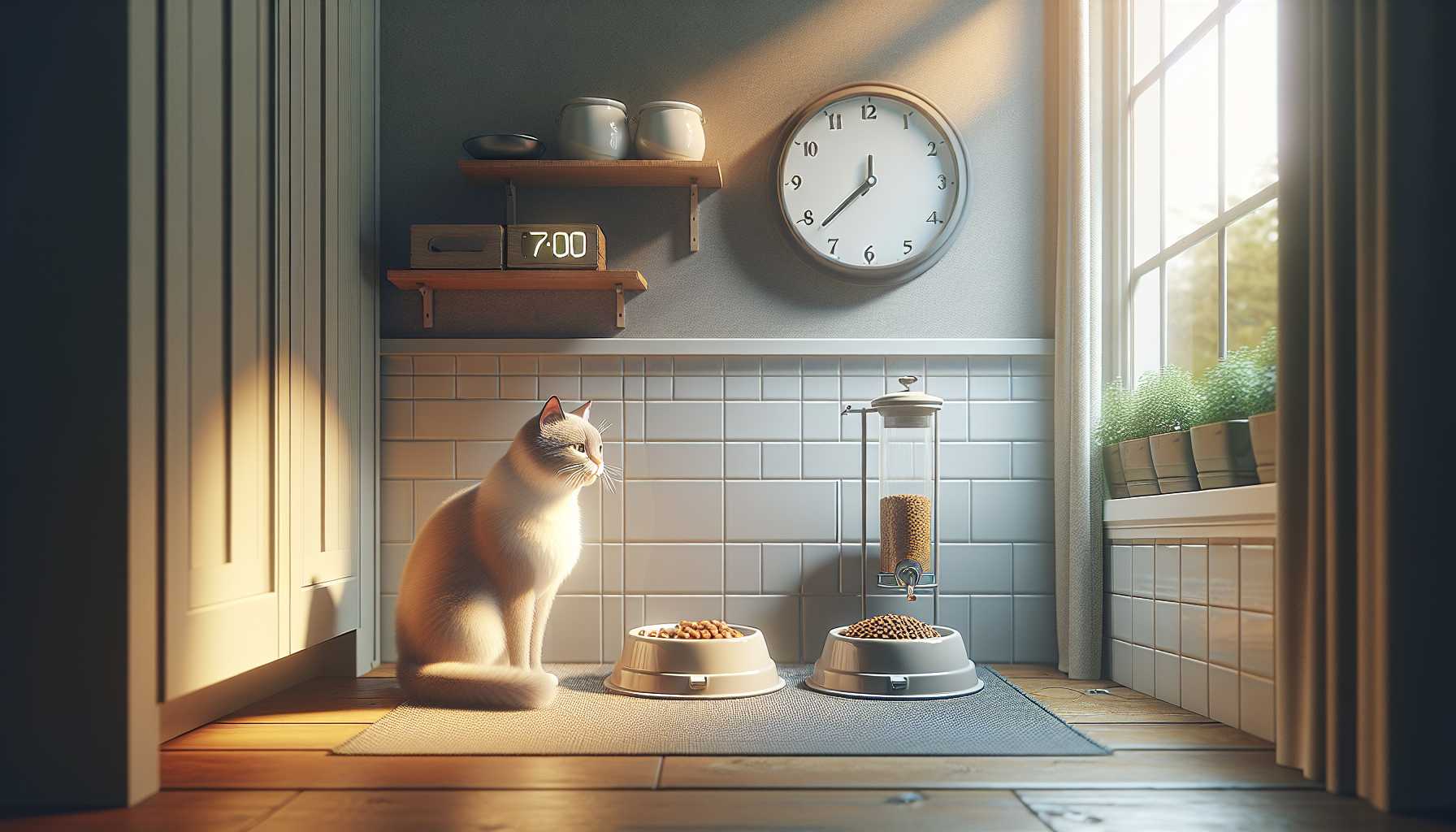Mealtime Training for Cats: Establishing Feeding Routines

Guiding Your Cat: Instilling Mealtime Habits
Are the early morning calls for breakfast from your kitty disturbing your sleep? You're not the only one! Let's explore how you can establish harmonious mealtime rituals that are beneficial for both your and your furry pal.
Significance of Maintaining Feeding Routines
Does your cat seem to have an uncanny sense of time? That's because cats flourish with regularity! A well-maintained feeding routine aids in: - Preventing weight gain - Diminishing anxiety - Fostering trust - Modulating behavior - Keeping the digestive system healthy
Pinpointing the Ideal Feeding Schedule
Determining the right feeding times is not as difficult as it seems! Most adult cats adapt well to two meals a day, with an interval of about 12 hours. My cat, Whiskers, adapted well to having meals at 7 AM and 7 PM.
Arranging Your Cat's Dining Space
Cats, much like us, value a pleasant dining spot! Here are the essentials: - Clean, stable bowls - A serene place to eat - Availability of fresh water - Easy-to-clean feeding spot - Separate eating spaces for multiple cats
Overcoming Unwanted Habits
Is your cat consistently begging for food? Don't fret! Most cat parents can relate to that. Here's how you can improve the situation: - Remain steadfast with feeding times - Avoid responding to begging conduct - Abstain from feeding from your plate - Use puzzle feeders for amusement - Guarantee enough playtime for your feline
Suggestions for Portion Control
Naturally, no one enjoys dealing with a famished cat! However, overfeeding is not the solution. Here are some thoughtful tips: - Precise measurement of food - Adherence to package recommendations - Adjusting portions according to your cat’s activity - Taking treats into account while measuring food - Regular monitoring of your cat's weight
Key Considerations
Remember, each cat is distinct! Here are some special circumstances to keep in mind: - Kittens require meals more often - Older cats might favor smaller servings - Certain medical conditions may necessitate precise timing - Some cats may enjoy snacking throughout the day
Transitioning Smoothly
Eager to get started? Take it slowly! Abrupt changes can result in stress for your cat. Here are some constructive steps: 1. Gradually tweak current feeding times 2. Ensure meal sizes remain the same 3. Retain optimism and patience 4. Positively reinforce desirable behavior 5. Stay consistent with the new schedule
Resolving Common Complications
Stumbling upon a few issues? That's perfectly normal! Here are some simple solutions for common problems: - Aggressive during feeding time? Feed the cats separately - Woken up at an ungodly hour? Resist the urge to serve food - Fussy eater? Stay firm with the schedule - Overindulgence? Consider using slow-feed bowls
Remember, the secret ingredient is consistency! Your fluffy friend will show gratitude through better manners and a healthier lifestyle. Have you recently begun training your cat's mealtime routine? We'd love to hear about your experience in the comment section below!
*Do note: Always seek advice from your vet before making major alterations to your cat's feeding routine, particularly if your cat has pre-existing health conditions.